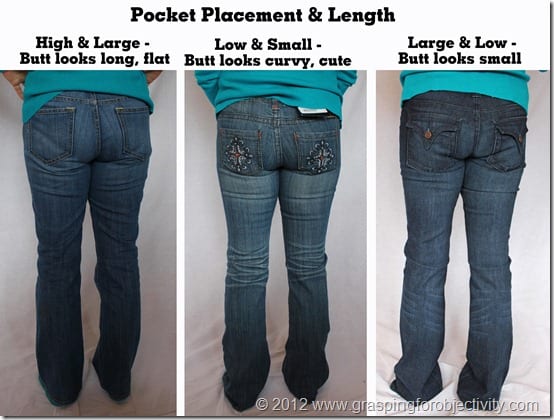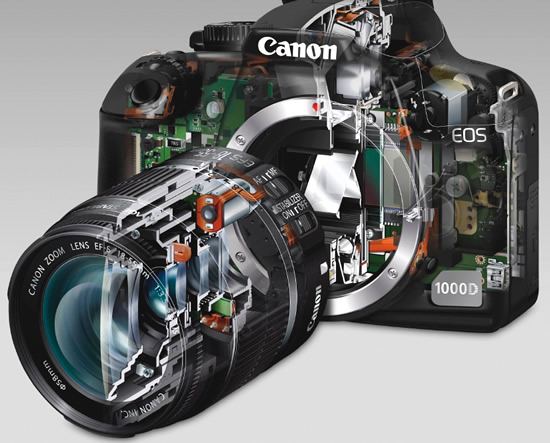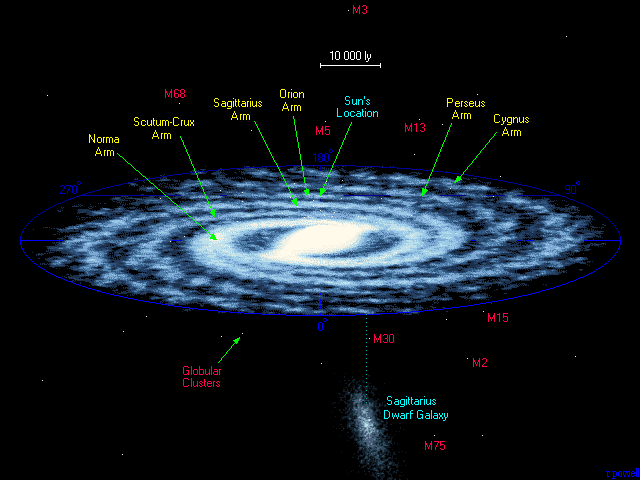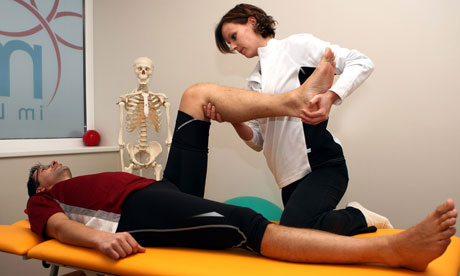Image Source: http://www.klausdierks.com
No matter where you work in the World, there will be some Geometry.
Most jobs will use Geometry somewhere in the work that is done. The only jobs we can think of where you may never use Geometry would be: Helper Occupations like Psychology and Social Work, or perhaps a Language Interpreter.
However in the helper professions, body language is very important. Non-threatening positions would involve adopting a certain geometry between Helper and Recipient. So there is probably Geometry in nearly every job.
Even a Call Center worker, who may spend most of their time talking on the phone, would still need to set up the geometry of the items on their desk to maximise comfort and work efficiency.
Indeed, there is Geometry in most jobs, even for a Lawyer if there was perhaps a legal liability case for a structure collapsing like a dance stage at a music event.
This is our review of just a few of the thousands of jobs that use Geometry. At the end of the post we have a neat little webquest that can be done to research any chosen job in more detail.
Let’s put some sparkle into this post, by starting off with some people who work in the world of “bright and shiney”.
Jewellers
People who make jewellery need to know a lot about Geometry. When diamonds are cut into shapes, there are specific geometric patterns that need to be followed.

Image Source: http://static.howstuffworks.com
To watch a really good six minute video all about Geometry in Jewellery, go to the following link:
Click here for Geometry in Jewellery Video
If the above video is not available, then the following YouTube link has a great set of videos all about cutting and grading diamonds:
Click here for Geometry in Diamonds Videos
Diamonds used on cutting blades and grinding stones are not the same as the natural diamonds jewellery is made from. They are synthetically made, but are not large enough to make jewellery out of.
Here is a great video by National Geographic about synthetic diamonds:
The geometry of the carbon atoms which make up diamond is fascinating, and probably a separate geometry lesson on its own.
In Diamond, carbon atoms are arranged in a pyramidal “tetrahedron” shape, but in the Graphite in your pencil lead, they are in a six sided hexagon shape.

Image Source: http://images.tutorvista.com
Related Jobs: Watch and Sunglasses Designers.
Fashion Designer
Fashion Designers need to have a good understanding of geometry and measurement to make clothes that enhance the human body, but can be broken down into parts which can be cut out of patterns.
Clothes are stitched using geometrical measurements, and designers need to know how to take a three dimensional shape, and convert it into a two dimensional pattern that can be made from flat cloth.

Image Source: http://www.startingaclothingline.com
The geometrical size and shape of clothes can be used to create the best looking clothes on people with different body shapes and sizes.
For example a lot of work has been done designing the back pockets on jeans, as shown in the following example:

Image Source: http://www.graspingforobjectivity.com
Related Jobs: Handbag, Shoes, and Leather Goods Designers, Milliner (Hat Designer).
Car Designer
Designing cars involves plenty of Geometry, with Formula One design being the most intricate of all. Computers are used to do a lot of the mathematical work for building prototype shapes and designs.

Image Source: http://www.sportsdesktopwallpaper.net

Image Source: http://www.colourbox.com
“Honeycomb” is the strongest and most light weight geometrical structure available on the planet, and is used to reinforce the inside the panels of race cars, as well as for making solid rubber indestructable wheels for army vehicles:

Image Source: http://content.worldcarfans.co
Related Jobs: Boat Designer, Bike Designer, Mechanical Engineer.
Construction Workers
People involved with constructing houses and buildings need to know lots of geometry. Components like walls need to be kept straight and aligned, with triangle shapes added to give the required strength.

Image Source: http://4.bp.blogspot.com
Related Jobs: Architect, Builder, Carpenter, Civil Engineer.
Optical Lens Makers
Without cameras and photos our world would be very dull and boring. And without their glasses, plenty of older people would not be able to see these pictures.

Image Source: http://www.howitworksdaily.com
Cameras require lenses to make sharp pictures and there is a lot of geometry involved with their design.

Image Source: http://www.rags-int-inc.com
Related Jobs: Opticians, Camera Designers, Mobile Phone Designers.
Interior Designers
People doing Interior Design need to know how Geometry, Color, and Scale can be combined to make aesthetically pleasing spaces.

Image Source: http://www.backyardlandscapes.com
Related Jobs: Furniture Maker, Kitchen Designer, Bathroom Designer, Curtain Maker, Shopfitters, Cabinet Maker.
Astronomers
The patterns of stars and planets involve plenty of mathematical Geometry.

Image Source: http://www.atlasoftheuniverse.com
Related Jobs: Physicist, Space Scientist.
3D Graphic Artist
Geometry is used to convert three dimensional real world objects into wire meshes of shapes. These can then be computer rendered to make characters for animations and games.

Image Source: http://rocketbox-libraries.com
Related Jobs: Graphic Designer, Game Developer, Animator.
Robotics Engineer
Setting up robotics involves designing the robots, as well as configuring the assembly line they work on. There is a lot of Geometry involved with getting the working spaces the right size and shape.

Image Source: http://www.swfcompanies.com
Related Jobs: Process Engineer, Computer Programmer, Surgeon, Medical Scientist – These people all use Robotics.
Hairdresser
Giving someone a hairstyle that is well suited to them involves understanding how different geometric hair shapes will look on different face shapes.

Image Source: http://studysols.com
Related Jobs: Makeup Artist, Nails Artist.
Landscape Gardener
People who build and design gardens need to understand space and shape to setup a geometry for the garden that allows it to be easily maintained, but still supply a spectacular appearance.

Image Source: http://messagenote.com
Related Jobs: Concretor, Swimming Pool Designer, Gardener, Farmer, Irrigation Engineer.
Plumber
There are a lot of angles and accurate measurements involved with getting pipes to fit into confined spaces, and still have all of the fluids run freely.

Image Source: http://www.visionplumbing.co.uk
Related Jobs: Chemical Engineer, Irrigator, Landscape Gardener, Drainage Contractor, Road Constructors.
Glaziers and Window Makers
People who make windows need to have a solid grasp of geometrical shapes, and what mixtures of shapes make something pleasing to look at. They also need to know measurements related to building codes and how much minimum natural light a room must have.

Image Source: http://classicalglass.files.wordpress.com
Related Jobs: Tiler, Floor Layer.
Medical Researcher
Viruses, Proteins, Choromsomes, and many other molecular structures consist of large groups of geometrical shapes. Research Scientists study these to better understand how humans can be made healthier.

Image Source: http://www.topnews.in
Related Jobs: Biologist, Pharmacist, Doctor, Drug Chemist, Medical Researcher, Geneticist.
Computer Aided Designer (CAD/CAM)
Many manufactured items, including machinery, roads, houses, appliances, and cars, are all designed using computers to help create the detailed geometrical shapes required.

Image Source: http://www.truweld-engineering.co.nz
Related Jobs: Draftsman, Engineer, Architect, Computer Games Developer.
Radiographer
Medical imaging uses complex geometry and mathematics to determine the shape of a tumor, or injured body parts, from CT scans, and other medical imaging measurements.

Image Source: http://www.nlm.nih.gov
Related Jobs: Doctor, Surgeon, Medical Scientist, Archeologist.
Computer Games Developer
There is a lot of geometry involved with making computer games. Characters in 2D games are made of sprite characters like Super Mario, which are actually made from hundreds of tiny colored squares.
A popular game called “Minecraft” is totally based on using Geometrical shapes to create exciting new virtual worlds.

Image Source: http://24.media.tumblr.com
Related Jobs: Graphic Designer, Computer Programmer.
Bridge Builder
People who work on the construction of roads and bridges are involved with a lot of Geometry to make sure that everything is properly shaped, smooth on the edges, and is strong enough to take the weight of many cars and trucks.

Image Source: http://www.cfr.org
Related Jobs: Road Building, Earth-moving and Excavation, Drainage Engineer, Town Planner, Surveyor.
Physiotherapist
There are certain maximum angles that human bone joints and muscles can move. A Physiotherapist needs to know these so that they can restore an injured person to full mobility.

Image Source: http://guardian.co.uk
Related Jobs: Doctor, Nurse, Personal Trainer, Physical Education Teacher, Chiropractor, Surgeon.
Artist
Geometric shapes can add great contrasting effects to paintings, and when combined with good color selection, create some vibrant works.
Artists need to understand space and proportion, and often use the “Golden Ratio” rule to make pictures balanced and pleasing to the eye.

Image Source: http://1.bp.blogspot.com
Related Jobs: Graphic Designer, Photographer, Website Designer, Sign Writer.
Geometry Webquest Assignment
There are many more jobs that use Geometry in some part of their work. In fact it is not easy to think of jobs which do not involve some aspect of measurement and space.
Teachers might be interested in having students do the following webquest that has students choose a job they are interested in, and research these five questions:
1. What is the nature of the work?
2. Are there special training, skills, other qualifications or talents needed?
3. What is the earnings/salary?
4. How is Geometry used in this profession? Give examples.
5. Did you find any additional information about this profession? (Eg. Related Jobs).
The link to the webquest is as follows:
Click here for Geometry Jobs Webquest
Related Items
Geometry in the Animal Kingdom
Mathematics of Sharks
Classifying Triangles
Angle Sum in a Triangle
Exterior Angle of a Triangle
Angles and Parallel Lines
Pythagoras and Right Triangles
Congruent Triangles
Similar Shapes and Similar Triangles
GeoGebra
Interactives at Mathwarehouse
If you enjoyed this post, why not get a free subscription to our website.
You can then receive notifications of new pages directly to your email address.
Go to the subscribe area on the right hand sidebar, fill in your email address and then click the “Subscribe” button.
To find out exactly how free subscription works, click the following link:
If you would like to submit an idea for an article, or be a guest writer on our blog, then please email us at the hotmail address shown in the right hand side bar of this page.
Like Us on Facebook
Our Facebook page has many additional items which are not posted to this website.
These include items of mathematical interest, funny math pictures and cartoons, as well as occassional glimpses into the personal life of “Passy”.
Check it out at the following link:
https://www.facebook.com/PassysWorldOfMathematics
While you are there, LIKE the page so you can receive our FB updates to your Facebook News Feed.
Help Passy’s World Grow
Each day Passy’s World provides hundreds of people with mathematics lessons free of charge.
Help us to maintain this free service and keep it growing.
Donate any amount from $2 upwards through PayPal by clicking the PayPal image below. Thank you!
PayPal does accept Credit Cards, but you will have to supply an email address and password so that PayPal can create a PayPal account for you to process the transaction through. There will be no processing fee charged to you by this action, as PayPal deducts a fee from your donation before it reaches Passy’s World.
Enjoy,
Passy




Pingback: Mathematics of Aircraft Disasters | Passy's World of Mathematics
Pingback: Fibonacci Sequence in Music | Passy's World of Mathematics
Pingback: Jobs With Geometry | Passy's World of Mathematics
Pingback: Coffee Spill Mathematics | Passy's World of Mathematics
Pingback: Classifying Triangles | Passy's World of Mathematics
Pingback: Angles and Parallel Lines | Passy's World of Mathematics
Pingback: Mathematics of the Melbourne Cup | Passy's World of Mathematics
Pingback: Geometry in the Animal Kingdom | Passy's World of Mathematics
Pingback: Tsunami Mathematics | Passy's World of Mathematics